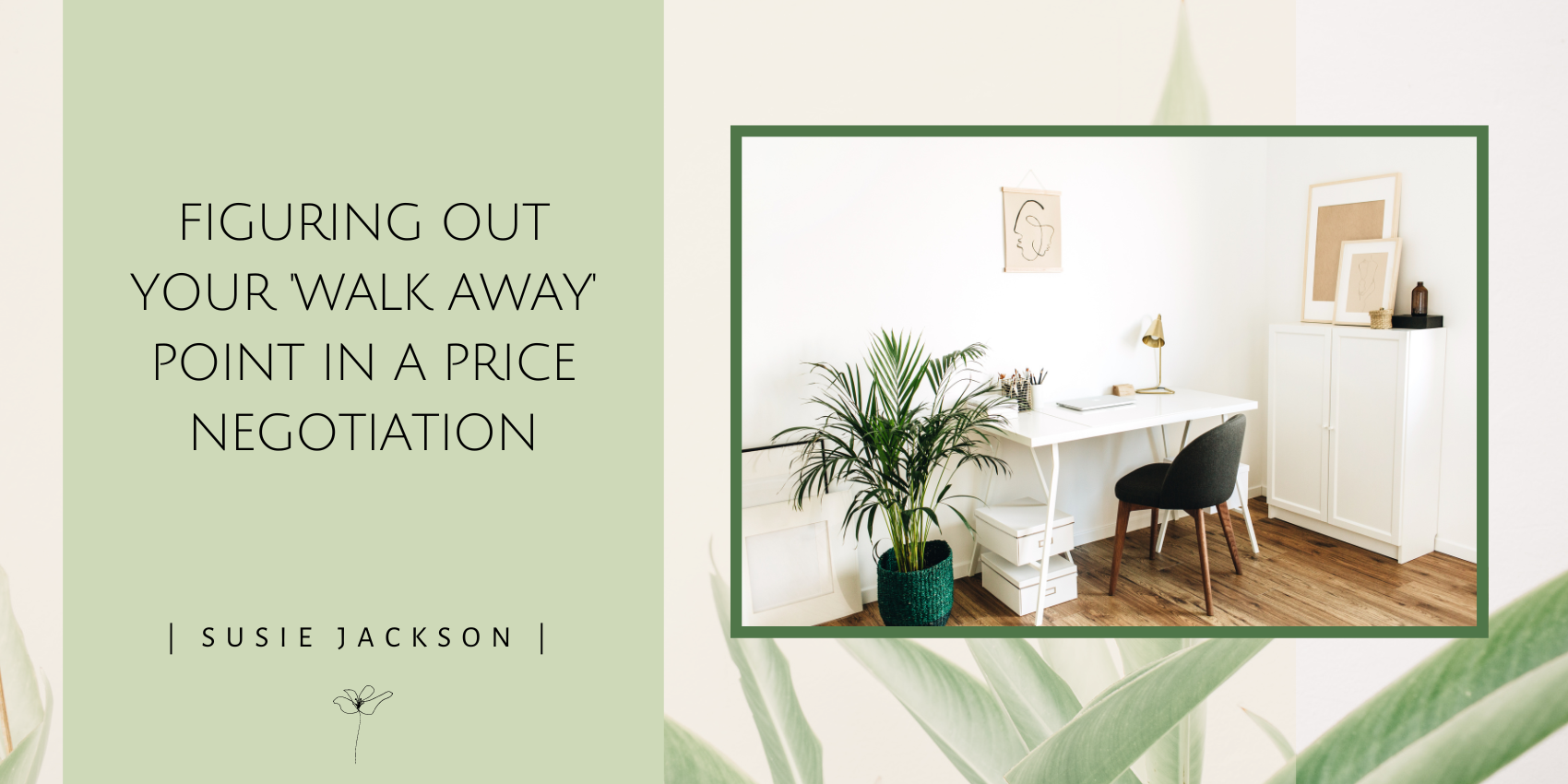Negotiating with Clients - Figuring Out Your 'Walk Away' Point in a Price Negotiation
Negotiating with clients can be intimidating. It’s something that many freelancers and small business owners struggle with, but it’s also an essential part of ensuring you earn enough on your projects to make a decent living.
One of the biggest hurdles you’re likely to encounter during a negotiation is being persuaded to agree to something you’re not actually happy with in the heat of the moment. It’s very easy to fall into the trap of allowing a client to push you down to a figure or outcome you’re going to regret, especially when you find yourself emotionally involved in the negotiation.
Preparing thoroughly for a price negotiation and fully understanding your numbers can help you avoid ending up in this situation. If you know what you’re not willing to accept before you even start your discussion with the client, you’re far less likely to find yourself agreeing to something you don’t want.
In this blog post, I’m setting out the 3 most common negotiation scenarios for freelancers and explaining how to identify your ‘walk away’ point in each situation. I hope it’ll save some of you from agreeing to something you might otherwise regret in the future.
Common price negotiation scenarios for freelancers and small business owners
There are 3 common negotiation scenarios that freelancers and small business owners will encounter during their careers. These are:
quoting for a project
agreeing a rate for ongoing work with a new client
raising your price with an existing client
The way I’d set my walk away point in each of these price negotiation scenarios differs. However, what remains the same is the groundwork necessary to understand the minimum you need to be charging.
In Charge with Confidence, I show my mentees how to calculate what they should be charging as a minimum for an hour of their time. We look at their business expenses and personal outgoings before dividing their expenditure by the number of hours they have available for paid client work. This gives them the minimum hourly rate they need to be earning to make any project worth their while.
Before you go into a price negotiation with a client, you should always understand the minimum you can afford to earn per hour. As well as your business and personal expenses, you should be taking things like tax, retirement, holidays, and sick leave into account in your pricing calculations. Once you have a minimum hourly rate, you can use this number to figure out your walk away point in any client negotiation.
How to negotiate on price in each of the common negotiation scenarios
1) Quoting for a project
The best way to avoid agreeing to something you don’t want in each of the common negotiation scenarios is to identify your walk away point before you enter the negotiation.
When quoting for a project, try to estimate as accurately as you can how long you're going to have to spend on the project from receipt to delivery. Having time-tracking data and knowing how long things usually take you can be invaluable when it comes to estimating the number of hours you’re likely to spend on a project.
Once you’ve calculated this figure, you can multiply the number of hours by your minimum hourly rate. This will give you your walk away point.
However, your walk away point isn’t the figure you should be quoting. When putting together a quote, you want to start by quoting higher than your minimum to leave room for negotiation. This way, if the client comes back to you and asks to pay less, you can consider offering various alternative options in exchange for a lower price. The lower price will still be worth your while, and the client might give you a concession to make the job easier or more enjoyable for you.
On the other hand, if your quote simply gets accepted upfront, you get more money!
2) Agreeing a rate for ongoing work with a new client
If a new client wants to agree a fixed hourly rate for any work you do for them, you already know that your minimum hourly rate is your walk away figure and the lowest you can go.
However, if they want to agree a fixed rate in some other format (e.g. per word, per audio minute, or per blog post), you’re going to have to do some calculations to get from your hourly rate to your minimum in that specific format.
Again, for this, you’re going to need some time-tracking data. By looking at your previous projects and seeing how long those have taken you, you should be able to get a good grasp of your hourly rate in this other format. How many words/audio minutes can you typically manage in an hour? Or how many hours does it usually take you to write a blog post?
Work out the equivalent of your minimum hourly rate in the unit the client is looking for and keep that in mind as your walk away point when you go into the negotiation.
Having said that, since this is a new client, I would always build in a little extra for things to take longer than you expect. There can often be teething problems with new clients as you get to know one another and understand how each other works, so I’d also account for this in your calculations.
3) Raising your price with an existing client
Unlike with new clients, when you’re entering a price negotiation with an existing client, you should have a good idea of how long the work they send you typically takes you to complete.
Ask yourself how much you would need to raise your agreed rate by in order to earn an effective hourly rate that meets your minimum. Ideally, you wouldn't accept anything less than this moving forward, so when you contact the client about increasing your prices, ask for more!
On the other hand, if you're already earning at least your minimum hourly rate, consider how much you would need to earn to make the work feel worth your while. If you’re already earning a rate you’re happy with, you could think about what else you might like to ask the client for in exchange for accepting the financial status quo and continuing at your current rates. For example, you could request longer deadlines, fewer rounds of edits, a simpler format, or a reduced scope.
If what you’re asking for makes the work easier, less time-consuming, or more enjoyable for you, you might prefer this option to raising your rate when you’re already earning an amount you’re happy with.
Whatever the situation and no matter which scenario you’re facing, always make sure you know your walk away point before you enter any client negotiation. When you do, you’ll find that you’re less likely to get swept up in the heat of the moment and find yourself agreeing to something you might regret in the future.
If you’d like some support to identify your minimum hourly rate so that figuring out your walk away point is easy, I can help you through Charge with Confidence. During the programme, we’ll take into account your business expenses, personal outgoings, and the amount of time you have available for paid client work, to make sure you’re earning what you need from every project. This way, you’ll be able to enter any client negotiation confidently, knowing how much you need to be charging and what you’re willing to accept in advance.
Hi, I’m Susie
I mentor freelancers on pricing and business finances so you can earn a decent living doing what you love.
I’m a translator, editor, chocoholic, crochet addict, animal lover, and budding gardener (get it?) who loves empowering others to achieve their goals.














